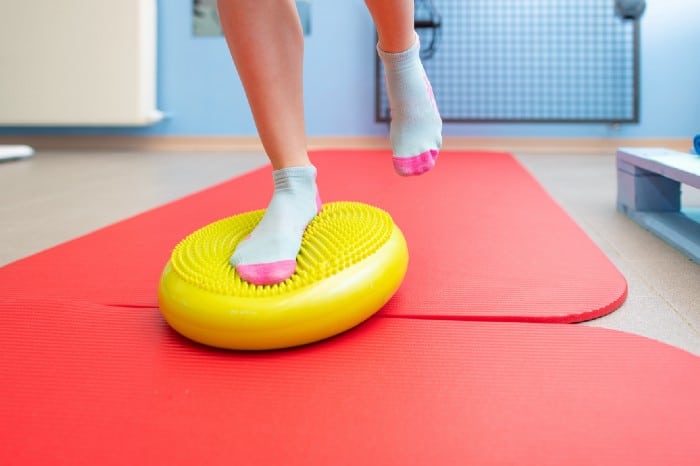
Accommodations that Work in the Secondary and Higher Education Environments
The world is filled with sensations. For almost everyone, this sensory input results in a range of experiences — some of which are amazing, some maybe not so pleasant.
For those who struggle with sensory processing, though, it can be difficult to navigate a world that is filled with so much stimulation. For sensory-sensitive individuals, many everyday situations can cause a whole spectrum of reactions ranging from overwhelm to hypo-stimulation, strong feelings of discomfort, or even pain. This is especially true for those with sensory processing issues who attend school.
Schools are hustle-and-bustle environments filled with chatter, bright lights, and a myriad of other forms of sensory input. Luckily, there are some great strategies for hypo and hypersensitive students that are helpful for regulating sensory input.
Managing Sensory Processing Difficulties
First, let’s talk about the basics.
The first line of care when it comes to managing sensory processing difficulties should always be professionally managed therapy or occupational therapy. A therapist can help you curate experiences, strategies, and coping mechanisms for when things are either difficult or easy.
After receiving expert help, however, it may still be useful to compare experiences and find out what has worked for other students.
Strategies that can Help with Feelings of Hyposensitivity or Hypersensitivity
One of the many strategies frequently used by occupational therapists is sensory diets. I know this may sound like altering the way you eat, but, the term actually refers to tailoring the activities and experiences you perform throughout the day to manage sensory sensitivity (Bennie, 2021). Tailoring your own sensory diet can help you find strategies that meet your needs in terms of adding or reducing stimulus.
A few minutes of research can quickly give you an in-depth look at extra ideas to add to your sensory menu, but here are a few that you could start with today:

- Take scheduled short walks. Taking a stroll in nature or with headphones on can help individuals regulate sensory input while at the same time grounding themselves.
- Engaging in proprioceptive activities. This may be as simple as wearing a weighted vest or doing exercises that work your muscles and joints. Activities such as weightlifting, running, skipping rope, or even carrying out chores like sweeping or vacuuming can help with sensory processing.
- Engage in auditory or visual sensory activities. Reading or listening to an audiobook, listening to calming or energizing music, using noise-canceling headphones, coloring or drawing, and avoiding or seeking out bright lighting are helpful coping strategies.

Incorporating Foods into a Sensory Diet
Food textures, tastes, and temperatures are often troublesome for hypo or hypersensitive students.
It may be helpful to tailor your food diet as part of your sensory diet. Some ideas include curating distinct food textures by seeking out crunchy, soft, or smooth foods. You can do the same with the distinct tastes, (sweet, salty, savory, etc., ) or food temperatures. For some, listening to their cravings might be ideal, whereas for others, a structured diet may work best.
For example, you might want to schedule crunchy or cold food in the afternoon, if it makes you feel more energized. Likewise, you may want to choose a warm beverage in the evening, if you’re having trouble calming down.
Sensory Strategies for the School Environment
Now that we have a list of ideas on how to help regulate stimuli, it’s only natural to wonder how you can implement them in a school setting.
Staying in school can be quite challenging for those with sensory issues, but with the right strategies, hyper or hyposensitivity is manageable for most. Integrating a sensory diet into school life may require you to advocate for yourself with teachers or cafeteria staff. Most importantly, it requires you to prioritize your own wellbeing.
If accommodations allow, take scheduled breaks to go for short walks. If not, then asking to use the restroom or water fountain can work to covertly permit you to take a short walk. You may also wish to use the time in between classes to exercise intentionally with mini workouts. Starting or ending your day with exercise can help to either increase your sensory tolerance or vent the overwhelm that has built up throughout the day.
You may also want to use assistive devices in class such as noise-canceling headphones, weighted vests, weighted lap pads, or fidget toys. As long as they are not loud or disruptive, these devices are permitted in most classroom settings.
Most schools have lunch breaks or give you the option to take your break on your own time. In either scenario, it can be useful to eat sensory-friendly or desirable foods, as discussed above. For impromptu meals, it can be useful to visit the school cafeteria beforehand and familiarize yourself with the menu. This will give you an advantage when it comes to selecting your menu on the fly.
Talking to your professor or your peers can also help you to come up with or discover accommodations that are available to you. Guidance counselors can also advise you on which accommodations have been available to students with similar difficulties in the past.
Finally, taking self-care breaks is crucial. This is true even for neurotypical people but is especially important for those with any kind of neurological sensory-processing difficulty. Stepping away from school on days that are too overwhelming shouldn’t spark feelings of guilt. Engaging in things like talk therapy, good hygiene, organizational habits, and healthy socialization can help you feel your best.
In the end, prioritizing your mental health will only boost your productivity, happiness, and satisfaction with your work.
The Best Strategy for Hypo and Hypersensitive Students: Be Proactive
The best way to deal with sensory difficulties in school is to be a proactive student. Tailoring the school experience to your needs is the best coping strategy for hypo and hypersensitive students. Take breaks when needed. Implement your unique sensory diet into your school life when possible.
These strategies will help reduce the stress associated with the neurodivergent condition impacting your sensory processing. Not only that, they will also help you put your abilities in the spotlight, rather than draw attention to your difficulties.
In a world that is so filled with sensory input, putting your needs first can help you thrive in any setting.
References
Familydoctor, Sensory Processing Disorder, Retrieved September 1st from https://familydoctor.org/condition/sensory-processing-disorder-spd/
Bennie,M. (2021) What is a Sensory Diet? Published by the Autism Awareness Centre, Inc. Retrieved September 1st from https://autismawarenesscentre.com/what-is-a-sensory-diet/
Photo Credits:
AaronAmat /iStockphoto Standard License
gwolters / Shutterstock Standard License
michelangeloop / iStockphoto Standard License
CLICK HERE to visit the articles page.

Download Neurodiversity in the Workplace! – Free!
Bring Susan Fitzell, M.Ed., CSP
Top Neurodiversity Speaker
To YOUR Organization!
